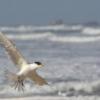-
Posts
9,502 -
Joined
-
Last visited
Content Type
Profiles
Forums
Gallery
Events
Everything posted by Jim Lad
-
Hello Oscar, and a warm welcome to the forum from 'Down Under'. John
-
In spite of all the changes happening around the museum and the crowds of families with kids over the school holidays. I've managed to make a little progress on the 'Meteor'. All of the forward square frames are now fitted and the next job will be to try and get the insides of the frames sanded and faired while I still have plenty of space to get inside the hull (at least the forward part). Once that's done I can start thinking about the after end. John
-
Wow! She's really come ahead since I was last here, mate! Some really nice work there, Popeye! John
- 378 replies
-
- t78 norden
- billing boats
-
(and 1 more)
Tagged with:
-
Hello Bigvasa, and a warm welcome to MSW from 'Down Under'. John
-
Hello Andrew, and a warm welcome to the forum from 'Down Under'. John
-

Rigging Question - Virginia Privateer
Jim Lad replied to David Lester's topic in Masting, rigging and sails
David, It looks like a jackyard for a mizzen topsail. Jack yards I know of hoisted with the sail - the halliard being attached to the yard. Not sure about the rigging of one that was permanently hoisted. John -
Great to see that you've posted it, Mike. Druxey's advice is good. We have my G-G-Grandfather's 'day book' from when he was a surveyor working on the surveys on the first railway lines in New South Wales. I've scanned the entire day book and also transcribed it so that it easily readable - especially for the younger generation who may not be used to reading cursive script. John
-
Hello Howard, and welcome home to MSW. John
-
Thanks for your detailed explanation, Dan. You've made great use off the resources available to solve what could otherwise have been some very trick design problems. John
- 287 replies
-
- michelangelo
- ocean liner
-
(and 1 more)
Tagged with:
-
You're getting there, indeed, Russ. She looks fine! John
- 420 replies
-
- captain roy
- lugger
-
(and 2 more)
Tagged with:
-
Post away, Mike. Anything of nautical historical interest is OK. John
-
Mike, looking at the photos of both ships, it looks like she underwent fairly radical surgery at some time - she lost both her clipper bow and counter stern in the transformation. She was probably a 'one off' design at the time of her original build and, even with the radical later surgery, the original plans (if available) would still be very valuable as they'll give you the correct shape of most of the hull. It would be helpful if you could find out where the alterations were carried out. Probably no plans survive for the alterations, but you never know your luck. If you can find out where she was altered, the next step would be to contact a local museum to see if they can help you with any further information. Good luck with your search. John
-
Hello Mike, and a very warm welcome to the forum from 'Down Under'. There won't be any plans of your great-grandmother's ship in her merchant navy configuration, but as she was built as a Government ship, there may well be plans still in existence of her original building. I'm not sure of sources in the U.S. for such plans, but would the Smithsonian be a starting point? John
-
She continues to grow as a beautiful example of the model maker's art, Bob. John
- 682 replies
-
- halifax
- lumberyard
-
(and 1 more)
Tagged with:
-
Piet, I somehow missed the beginning of your log. I look forward to following your build of this heroic ship! John
- 378 replies
-
- java
- pacific crossroads
-
(and 2 more)
Tagged with:
-
Very neat looking deck there, mate! John
- 378 replies
-
- t78 norden
- billing boats
-
(and 1 more)
Tagged with:
-
What? You don't have working door hinges? John
- 378 replies
-
- t78 norden
- billing boats
-
(and 1 more)
Tagged with:
-

A newbie...... And yet, not exactly a newbie
Jim Lad replied to Jake's topic in New member Introductions
Hello Jake, and a warm welcome to the forum from 'Down Under'. John
About us
Modelshipworld - Advancing Ship Modeling through Research
SSL Secured
Your security is important for us so this Website is SSL-Secured
NRG Mailing Address
Nautical Research Guild
237 South Lincoln Street
Westmont IL, 60559-1917
Model Ship World ® and the MSW logo are Registered Trademarks, and belong to the Nautical Research Guild (United States Patent and Trademark Office: No. 6,929,264 & No. 6,929,274, registered Dec. 20, 2022)
Helpful Links
About the NRG
If you enjoy building ship models that are historically accurate as well as beautiful, then The Nautical Research Guild (NRG) is just right for you.
The Guild is a non-profit educational organization whose mission is to “Advance Ship Modeling Through Research”. We provide support to our members in their efforts to raise the quality of their model ships.
The Nautical Research Guild has published our world-renowned quarterly magazine, The Nautical Research Journal, since 1955. The pages of the Journal are full of articles by accomplished ship modelers who show you how they create those exquisite details on their models, and by maritime historians who show you the correct details to build. The Journal is available in both print and digital editions. Go to the NRG web site (www.thenrg.org) to download a complimentary digital copy of the Journal. The NRG also publishes plan sets, books and compilations of back issues of the Journal and the former Ships in Scale and Model Ship Builder magazines.


